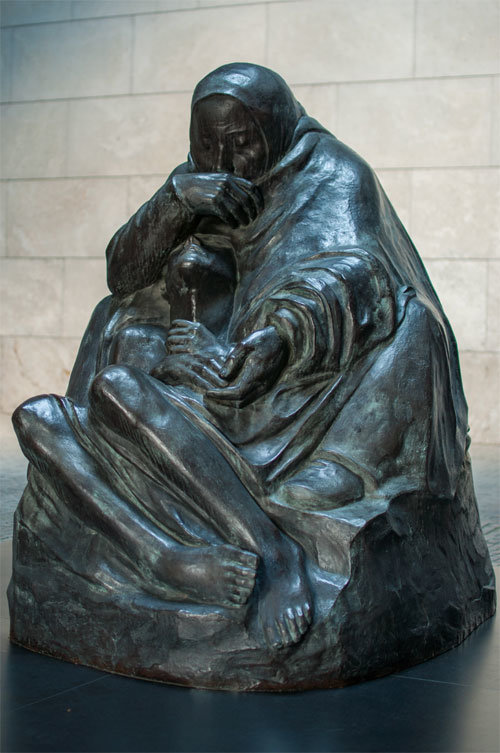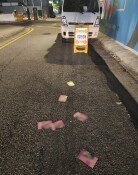The victims of war and tyranny
The victims of war and tyranny
Posted April. 25, 2019 07:46,
Updated April. 25, 2019 07:46

The Pieta refers to a statue depicting the Virgin Mary holding the dead body of Christ after his crucifixion. The Pieta created by German artist Kathe Kollwitz is not like other Pieta statues. The Virgin Mary is holding his dead son from behind, covering her mouth with one hand and touching the hand of his dead son with the other hand. The solemn face of the mother, who seems to be lost in thought at the pain of grief and loss, makes those who watch it feel sad.
This piece of work is based on the artist’s own experience of losing his son in a war. Born to a middle-class family in Preussen, Kollwitz got married to doctor Karl Kollwitz at the age of 24 and started to experience the life of poor ordinary people. Her husband built a charity hospital outside Berlin and dedicated his life to helping poor and marginalized people. The artist herself lived with those poor patients and put their lives in painting. After earning her reputation from her prints “The Weavers’ Revolt,” she drew and printed works based on labor, poverty, sickness, death, and anti-war, becoming the symbol of resistance against unjust authority. She went through a terrifying ordeal after the outbreak of World War I, where her second son Peter died in a war. Her grandson Peter also died in World War II.
After losing her son, she became a fighter. She denounced the horrors of war through her works. The Nazi regime banned her from exhibiting her works but she created Pieta in order to send an anti-war message to the world and represent the voices of mothers who lost their sons in a war. She could have lived a life as an intellectual born to a middle-class family but instead chose to stand by the weak and the vulnerable. She died on April 22, 1945, just 16 days before the war ended.
When the German government reopened “Neue Wache” in Berlin in 1993 to commemorate the victims of the war, it created a bigger replica of Kollwitz’s Pieta to exhibit it at the memorial permanently. On the floor in front of the statue is the inscription, “To the Victims of War and Tyranny.”




![반찬통 착색 고민 끝…‘두부용기’ 버리지 말고 이렇게 쓰세요 [알쓸톡]](https://dimg.donga.com/c/138/175/90/1/wps/NEWS/IMAGE/2026/01/09/133126593.3.png)

![“생수병, 버리지 말고 자르자”…주방 밀폐 용기 끝판왕 [알쓸톡]](https://dimg.donga.com/c/138/175/90/1/wps/NEWS/IMAGE/2026/01/06/133101939.3.png)
